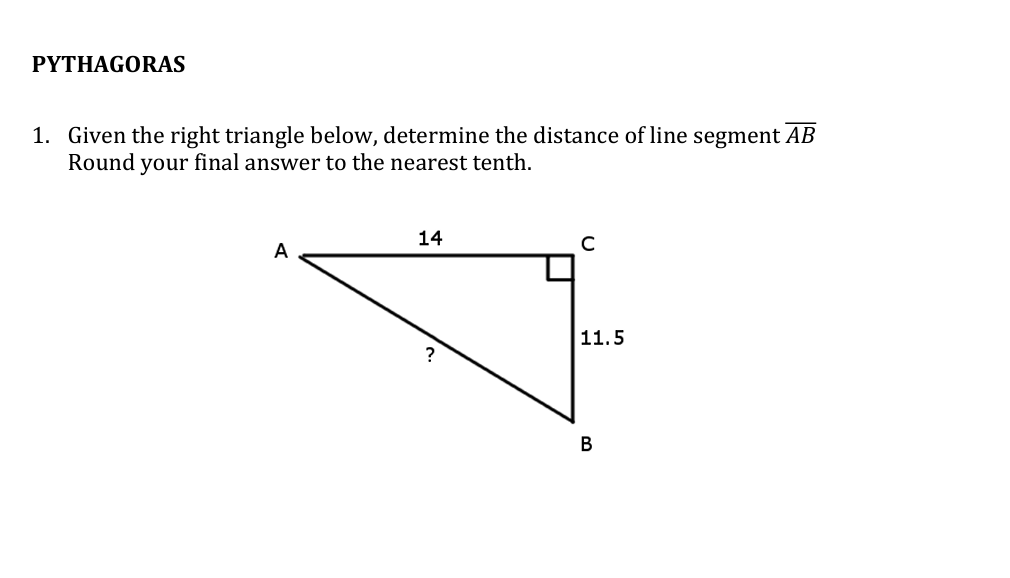Given the right triangle below, determine the distance of line segment AB. Round your final answer to the nearest tenth.

Understand the Problem
The question is asking to determine the length of line segment AB in a right triangle, using the Pythagorean theorem. The length of side AC is given as 14, and the length of side BC is given as 11.5. We will use the formula a² + b² = c² to solve for the unknown distance AB.
Answer
The length of line segment \( AB \) is approximately \( 18.1 \).
Answer for screen readers
The length of line segment ( AB ) is approximately ( 18.1 ).
Steps to Solve
-
Identify the sides of the triangle
In the right triangle, we have the lengths of sides AC and BC.
- AC (adjacent side) = 14
- BC (opposite side) = 11.5
- AB (hypotenuse) is the unknown we need to find.
-
Apply the Pythagorean theorem
The Pythagorean theorem states that in a right triangle, the sum of the squares of the legs equals the square of the hypotenuse:
$$ a^2 + b^2 = c^2 $$
In our case, this translates to:
$$ AC^2 + BC^2 = AB^2 $$
-
Substitute the known values
Substituting in the values we have:
$$ 14^2 + 11.5^2 = AB^2 $$
Calculating each term:
- $ 14^2 = 196 $
- $ 11.5^2 = 132.25 $
-
Calculate the left side of the equation
Now we sum these results:
$$ 196 + 132.25 = AB^2 $$
$$ 328.25 = AB^2 $$ -
Solve for AB
To find AB, take the square root of both sides:
$$ AB = \sqrt{328.25} $$ -
Evaluate and round the result
Calculating this gives:
$$ AB \approx 18.1 $$
Rounding to the nearest tenth, the length of line segment AB is approximately 18.1.
The length of line segment ( AB ) is approximately ( 18.1 ).
More Information
The Pythagorean theorem is essential for calculating distances in right triangles. This theorem is derived from the properties of Euclidean geometry and is widely used in various fields, including architecture, physics, and engineering.
Tips
- Failing to correctly square the lengths of the sides, leading to incorrect calculations.
- Forgetting to take the square root of the sum to find the hypotenuse.
AI-generated content may contain errors. Please verify critical information